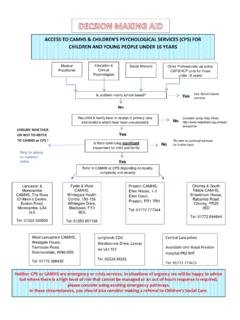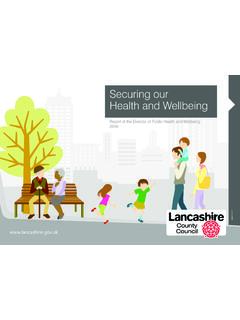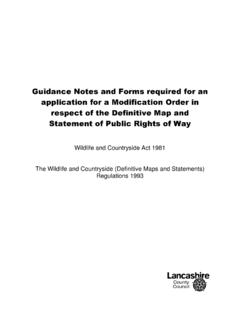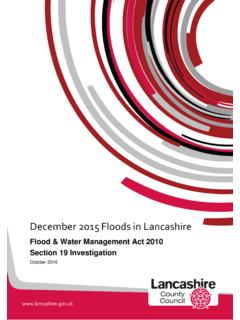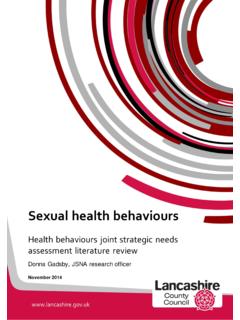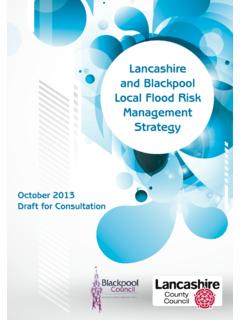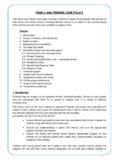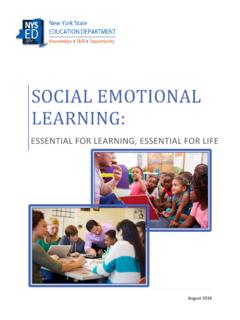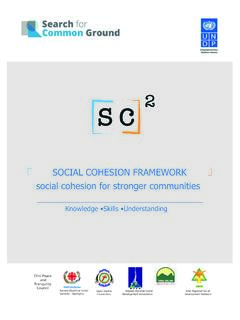Transcription of Measuring and Assessing Social Isolation and Loneliness
1 Measuring and Assessing Social Isolation and Loneliness This document links from Chapter 7, the Resources section, of the report 'Hidden from View Tackling Social Isolation and Loneliness in Lancashire' (Lancashire County Council, October 2016). Introduction Since Social Isolation and Loneliness are different (though they may often overlap for an individual), it makes sense that they may also potentially be measured and assessed differently. Indeed there are a number of different assessment 'tools' which have been developed for various purposes, including both for research and service use. For service use, a tool may be used for initial screening, for example as part of a 'making every contact count' (MECC) approach (see Chapter 4 of 'Hidden from View'). This can help to understand whether onward referral of an individual to help them with Social Isolation or Loneliness issues might be appropriate (with their consent).
2 Alternatively, a tool could be used to assess an individual who has already been referred (whether specifically for Social Isolation or Loneliness , or not), to gather more information which can be used to help them specifically. This can form part of a person-centred approach and pathway. A tool may also assess someone's progress through time, potentially both to help that person (including knowing whether they have been helped and what further support is appropriate). Finally, by pooling together the results from a number of people who have been helped, a tool can help assess whether a particular activity or programme is beneficial in tackling Social Isolation and/or Loneliness . Often a tool useful for one purpose may not be suitable for another, although sometimes the same tool can be used for different purposes (perhaps with slight modification). Social Isolation and Loneliness may be seen in the context of personal wellbeing as a whole, and there is a question of whether 'wellbeing' (and tools which measure wellbeing), may be adequate on its own to assess Social Isolation or Loneliness .
3 One popular tool for Assessing wellbeing is the Warwick-Edinburgh Mental Well Being Scale (WEMWBS); particularly the short six-item scale in a service setting. Although WEMWBS has at least one component which could relate to Social Isolation and/or Loneliness (asking to what extent the respondent agrees with: "I've been feeling close to other people"), WEMWBS is not specifically designed or validated to measure either Social Isolation or Loneliness . As the report 'Hidden from View' discusses, dealing with people's specific issues around being socially isolated or lonely can be an important preventive approach to maintain good health and wellbeing. It makes sense then that, if we are putting in place activities aiming to reduce Social Isolation or Loneliness (for both individuals and the population as a whole), we should look at Measuring these aspects specifically.
4 Probably this would be as well as, rather than instead of, Measuring wellbeing ( through using WEMWBS). If we were to measure 'wellbeing' only, an intervention might for example appear to have little measurable benefit, even where someone feels less Social isolated or lonely - if this has not yet impacted measurably on other aspects of wellbeing. In other words, Measuring wellbeing only could be a problem if it does not capture important benefits for an individual around tackling their Social Isolation and Loneliness . Measuring only wellbeing may also shift focus onto helping exclusively those people with (very) low baseline wellbeing while we might want to ensure these people are helped, this could also potentially miss preventive opportunities to maintain people's good health and wellbeing, through addressing their specific Social Isolation or Loneliness needs.
5 Tools to measure Social Isolation and Loneliness Loneliness We start with measurement of Loneliness here, since there appears to have been more work on this recently in the UK (spearheaded by the 'Campaign to End Loneliness ' or CEL) than on Social Isolation - especially on how Loneliness can be measured in a service (rather than research) setting. The main source for measurement of Loneliness is CEL's 2015 guidance which describes four measurement tools: CEL's own 3-question scale; the Giervald 6-question scale; the UCLA 3-question scale; and single-item scales. CEL recently developed their own scale particularly for services (rather than researchers). It might therefore make sense to use the CEL scale; although it does not appear to have been so rigorously academically evaluated (partly because it is so new). The statements the CEL tool uses to measure Loneliness specifically are: 1.
6 I am content with my friendships and relationships 2. I have enough people I feel comfortable asking for help at any time 3. My relationships are as satisfying as I would want them to be See: (1-page summary); and (full 40-page guidance) Also useful is ' Measuring the impact of services on Loneliness ' (Jopling, 2014). This gives for useful background, including a discussion on using WEMWBS or other non-specific tools in this context (on ). Social Isolation For Measuring Social Isolation specifically (rather than Loneliness ), there are a number of scales which appear both specific and possibly appropriate; three examples are: Duke Social support Index (DSSI) 10 item scale; see: (Appendix 2, report is good background reading) Lubben Social Network Scale (LSNS) including a 6-item scale; see: Social Disconnectedness 8-item scale (Cornwell and Waite, 2009) [note these authors also described a Perceived Isolation Scale]; see, : There currently does not appear to be any summary guidance on tools for Assessing Social Isolation , equivalent to CEL's guidance on Assessing Loneliness .
7 It is therefore possible that other tools exist for Measuring Social Isolation specifically, which may be better for services to use (rather than as research tools).
